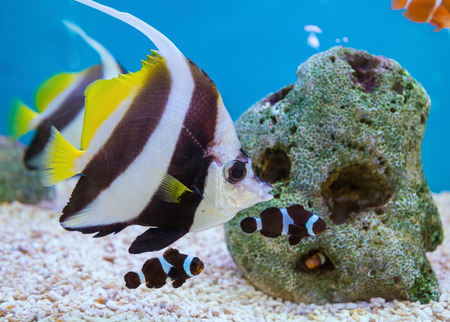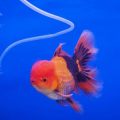Choosing the Right Equipment for UK Homes
When setting up an aquarium in the UK, selecting equipment tailored to local climates and home sizes is essential for both fish health and energy efficiency. British homes often have varying room temperatures due to seasonal changes, so choosing the right heater is critical. Opt for energy-efficient heaters with built-in thermostats, which not only maintain a stable temperature for your aquatic pets but also help reduce electricity bills.
Filtration is another cornerstone of aquarium maintenance. In the UK, compact filters are ideal for smaller flats, while larger detached homes may accommodate more robust systems. Look for models that offer biological, mechanical, and chemical filtration to ensure water quality remains high throughout the year.
Lighting plays a dual role: supporting plant growth and enhancing the viewing experience. LED lighting is highly recommended for British fish keepers due to its low energy consumption and long lifespan. Many modern LED fixtures offer adjustable brightness and timers, which can mimic natural daylight cycles even during the UKs darker winter months.
Below is a quick reference table to help you match equipment types with common UK household scenarios:
| Home Type | Heater Recommendation | Filter Type | Lighting Option |
|---|---|---|---|
| Flat/Apartment | 50-100W adjustable heater | Internal power filter | Compact LED strip |
| Semi-detached House | 100-200W thermostat heater | External canister filter | Dimmable LED panel |
| Detached House/Conservatory Setup | 200-300W energy-saving heater | Sump or large canister filter | Full-spectrum programmable LEDs |
Selecting the right combination of these elements ensures your aquarium thrives regardless of typical British weather fluctuations or home layouts. Always read product reviews and check energy ratings before making a purchase to guarantee both environmental responsibility and cost-effectiveness.
Managing Water Quality and Testing
Maintaining optimal water quality is a cornerstone of successful fishkeeping, especially for British aquarists who must navigate unique tap water characteristics. The UK’s water supply varies greatly by region—some areas have soft water, while others experience hard, mineral-rich supplies. Understanding these differences is vital to ensuring your aquarium remains a healthy environment for your aquatic pets.
Guidance on Using Water Conditioners
Tap water in the UK often contains chlorine or chloramine, both of which are harmful to fish. Always use a reputable water conditioner when adding new water to your tank. These products neutralise harmful chemicals and can also detoxify heavy metals sometimes present in the mains supply. Check product instructions for dosage rates appropriate to your tank’s volume.
Understanding Local Tap Water Chemistry
It’s important to know whether your local tap water is hard or soft, as this affects not only pH but also the general and carbonate hardness (GH and KH) of your aquarium. Many fish species have specific requirements for these parameters. Below is a guide to common UK regional water characteristics:
| Region | Water Hardness | Typical pH Range |
|---|---|---|
| South East England (London, Kent) | Hard | 7.5–8.5 |
| Northern England (Manchester, Leeds) | Soft/Moderate | 6.5–7.5 |
| Scotland & Wales | Soft | 6.0–7.0 |
Regular Water Testing Best Practices
Routine testing helps you monitor key parameters such as ammonia, nitrite, nitrate, pH, GH, and KH. Invest in a reliable test kit rather than relying solely on strips for more accurate results. Test weekly or after any maintenance that could alter water chemistry, such as filter cleaning or large water changes.
Key Tips for British Fish Keepers:
- Always treat tap water with conditioner before adding it to the tank.
- Test source water regularly to stay aware of any municipal changes.
- If keeping sensitive species, consider using reverse osmosis (RO) water and remineralising as needed.
By understanding your local tap water profile and adhering to regular testing routines, you’ll provide a stable and safe habitat for your fish—ensuring their health and longevity in any part of the UK.

3. Routine Cleaning and Algae Control
Maintaining a healthy aquarium involves consistent cleaning and effective algae management, especially considering the unique challenges posed by the British climate and daylight patterns. Below are some essential tips for British fish keepers to establish an efficient cleaning schedule, control algae growth influenced by UK daylight hours, and select safe products for your aquatic pets.
Tips for Effective Cleaning Schedules
- Weekly Tasks: Remove uneaten food, wipe glass surfaces, and check equipment for proper functioning.
- Fortnightly Tasks: Perform partial water changes (about 20-25%), vacuum substrate, and rinse filter media with tank water to retain beneficial bacteria.
- Monthly Tasks: Deep clean decorations and inspect plants for decaying leaves.
| Task | Frequency |
|---|---|
| Remove debris & uneaten food | Weekly |
| Partial water change | Every 2 weeks |
| Clean filter media | Every 2 weeks |
| Deep clean décor/plants | Monthly |
Managing Algae with British Daylight Hours
- The UKs long summer days can encourage excessive algae growth. Position your aquarium away from direct sunlight to minimise this effect.
- Use timers to limit artificial lighting to 8–10 hours per day, adjusting as needed throughout the year.
- Add live plants, which compete with algae for nutrients, naturally reducing unwanted growth.
Safe Aquarium Cleaning Product Recommendations
- Avoid household cleaners that may contain harmful chemicals; always use aquarium-specific products.
- Bristol-based brands such as NT Labs or Interpet offer UK-approved safe solutions for glass cleaning and water treatment.
- If you prefer natural methods, a simple solution of white vinegar diluted in water can safely remove stubborn limescale from glass (ensure thorough rinsing before refilling).
By establishing a regular cleaning routine tailored to British conditions and choosing safe products, you’ll support the well-being of your fish while keeping your aquarium sparkling clean all year round.
Feeding Practices and Nutritional Considerations
Proper feeding is crucial for maintaining a healthy aquarium environment and ensuring the wellbeing of your fish. British fish keepers have access to a wide variety of commercially available fish foods, each suited to different species and dietary needs. Understanding feeding frequency, food types, and how to avoid overfeeding are key aspects of responsible aquarium care.
Feeding Frequency
Most tropical and coldwater fish thrive when fed small amounts once or twice daily. Overfeeding can quickly lead to water quality issues, so it’s best to offer only what your fish can consume within two minutes. Some species, such as goldfish or bettas, may benefit from occasional fasting days to help maintain digestive health.
Types of Fish Foods Available in the UK
British aquarists can choose from an array of fish foods stocked by local pet shops and aquatic specialists. Selecting the right type depends on your fish species and their natural diets.
| Food Type | Description | Suitable For |
|---|---|---|
| Flake Food | Widely available; ideal for surface feeders | Tetras, guppies, barbs |
| Pellets | Sinks slowly; good for mid-water or bottom dwellers | Corydoras, angelfish, cichlids |
| Frozen Foods | Nutrient-rich; includes bloodworm, brine shrimp | Most tropical species |
| Live Foods | Encourages natural foraging behaviour | Puffers, bettas, larger cichlids |
| Vegetable-Based Foods | For herbivorous and omnivorous species | Plecos, mollies, some cichlids |
Preventing Overfeeding: Top Tips for British Aquarists
- Feed at set times each day and monitor how much is eaten.
- Remove uneaten food after a few minutes to prevent decay.
- Adjust portions based on tank population and species requirements.
Avoiding Common Pitfalls
If you notice cloudy water or excess waste accumulating on the substrate, these are often signs of overfeeding. Using a feeding ring or spot-feeding timid fish can help ensure all inhabitants receive their share without excess food polluting the water. A well-balanced diet tailored to your fish species will not only enhance their colours but also support robust immune systems and longevity.
5. Seasonal Aquarium Care
British weather can be notoriously unpredictable, and the changing seasons bring unique challenges for aquarium maintenance. Fish keepers must adapt their care routines to ensure a stable environment for their aquatic pets year-round. Below is a guide on how to adjust your aquarium maintenance through the British seasons, focusing on temperature fluctuations and holiday preparations.
Adjusting to Temperature Fluctuations
Central heating in winter and warm spells in summer can both impact water temperature. Sudden changes can stress fish and disrupt biological balance. Consider using an adjustable aquarium heater with a reliable thermometer to monitor temperatures closely.
| Season | Typical Challenge | Maintenance Tips |
|---|---|---|
| Winter | Cold snaps, central heating causing dry air | Check heater function regularly; top up evaporated water with dechlorinated tap water; avoid placing tanks near radiators or draughts |
| Spring/Autumn | Frequent temperature swings | Monitor daily temperatures; adjust heater settings as needed; watch for condensation and mould around tank area |
| Summer | Heatwaves, risk of overheating | Use fans or open lids slightly (with precautions); avoid direct sunlight; do partial water changes with slightly cooler water if safe for fish species |
Holiday Preparations for British Fish Keepers
If youre planning a getaway during school holidays or summer breaks, its crucial to prepare your aquarium:
- Arrange for a trusted friend or neighbour to check on the tank, ideally someone with basic knowledge of fish care.
- Invest in an automatic feeder and test it beforehand to prevent overfeeding.
- Do a thorough water change and equipment check before leaving.
Quick Holiday Checklist:
- Set timers for lights to maintain consistent day/night cycles.
- Leave clear written instructions if someone else is caring for your fish.
- Avoid adding new fish or making major changes right before leaving.
Staying Proactive All Year Round
No matter the season, regular monitoring and small adjustments will help keep your aquarium healthy and thriving in the face of Britains changing weather. By anticipating seasonal needs, you protect both your aquatic life and your investment in the hobby.
6. Health Monitoring and Disease Prevention
Maintaining the health of your aquarium fish is essential for every British fish keeper. Being able to spot early signs of illness can prevent minor issues from turning into major outbreaks. Common symptoms to watch out for include clamped fins, white spots, unusual swimming patterns, loss of appetite, and changes in colour. Early identification is crucial for prompt treatment and better recovery rates.
Identifying Signs of Common Fish Ailments
| Disease | Visible Symptoms | Recommended Action |
|---|---|---|
| White Spot (Ich) | Tiny white dots on body/fins, rubbing against objects | Raise temperature gradually, use appropriate medication |
| Fin Rot | Frayed or disintegrating fins, redness at base | Improve water quality, apply antibacterial treatment |
| Swim Bladder Disease | Difficulty swimming, floating on side or sinking | Feed peas (for constipation), isolate affected fish if needed |
The Importance of Quarantine Tanks
A quarantine tank is an invaluable tool for British aquarists. Isolating new arrivals or sick fish helps prevent the spread of disease within your main aquarium. Always keep a small, cycled tank ready for emergencies. New fish should be observed in quarantine for at least two weeks before introduction to the main tank. This practice not only protects your established stock but also allows for easier observation and targeted treatment.
Accessing Local Veterinary and Aquatic Support
If you suspect a serious health issue or are unsure about a diagnosis, consult local aquatic specialists or vets with expertise in fish care. Many areas across the UK have aquatics shops that offer advice and can recommend reputable aquatic vets. The Fish Health Inspectorate (FHI) is another resource for guidance on notifiable diseases. Staying connected with local aquarium societies can also provide valuable peer support and advice tailored to the UK environment.
7. Sustainable Fish Keeping in the UK
Adopting sustainable practices is essential for British fish keepers who wish to maintain vibrant aquariums while minimising their environmental impact. Ethical fish sourcing, responsible disposal methods, and community engagement are key pillars of sustainability in aquarium care.
Ethical Fish Sourcing
Selecting fish from reputable UK-based breeders or suppliers ensures the animals have been raised or collected humanely and legally. Avoid supporting the illegal wildlife trade or species that are threatened in their natural habitats. Ask your local aquatic shop about the origin of their livestock and opt for captive-bred species whenever possible.
Checklist for Responsible Fish Purchasing
| Action | Why It Matters |
|---|---|
| Buy from certified UK suppliers | Supports ethical breeding and reduces wild capture |
| Choose captive-bred over wild-caught fish | Minimises ecological impact on native populations |
| Avoid impulse buying | Prevents unsuitable or unsustainable choices |
Environmentally Friendly Disposal
If you need to rehome fish or dispose of aquarium plants, do so responsibly to avoid harming local ecosystems. Never release unwanted fish, plants, or aquarium water into British rivers, lakes, or ponds, as this can introduce invasive species and diseases.
Sustainable Disposal Options
- Contact local aquarist clubs or societies for rehoming options
- Return surplus stock to your aquatic retailer if permitted
- Compost dead plant matter (if disease-free) rather than binning it
Participating in Local Fishkeeping Communities
Getting involved with local fishkeeping groups—either online forums or regional clubs—enables you to share knowledge, swap equipment, and find new homes for surplus stock. Many UK communities also organise events focusing on conservation and best practices.
| Community Involvement Benefits |
|---|
| Access to advice from experienced hobbyists |
| Opportunities to buy/sell/trade ethically sourced fish and equipment |
| Participation in conservation initiatives and educational workshops |
By embracing these sustainable approaches, British aquarists can enjoy the beauty of their home aquaria while contributing positively to animal welfare and the environment.


